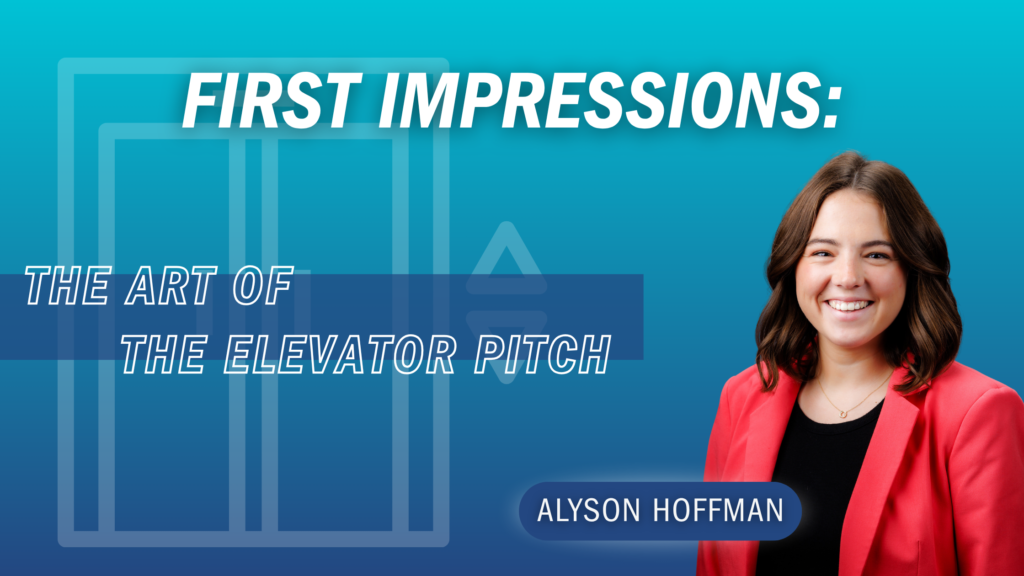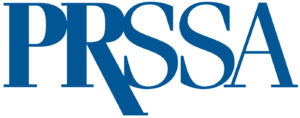First Impressions: The Art of the Elevator Pitch

Networking isn’t always easy, and making a good first impression can be difficult. Deciding what to include in your 30-second introduction can feel overwhelming. You want to sound authentic, confident and experienced without slipping into a rehearsed version of the pitch you’ve practiced countless times in front of the mirror. So, how can you truly master your elevator pitch?
Alyson Hoffman, marketing professional at Cardinal Health, Vice President of Communications for the Central Ohio PRSA Board, and former PRSSA National President, shares her insights on how to craft a strong elevator pitch and use it to make a memorable impact.
What elements make a strong elevator pitch?
A strong elevator pitch includes four main parts:
- Who – Start with your name, university, major/minor, and graduation date.
- Why – Share why you chose your major or area of interest. This can include your passion or the impact you hope to make.
- What – Highlight relevant experiences, skills, or projects that set you apart.
- Next – End with your current goal, such as an internship you’re seeking or your post-graduation plans.
How do you make an elevator pitch sound natural and genuine?
Authenticity looks different for everyone, so focus on what feels natural for you. I recommend speaking slowly with intentional pauses, making eye contact, using natural inflection, and smiling. Remember, your pitch is your own story—it doesn’t need to sound like anyone else’s.
What are the benefits of giving an elevator pitch?
An elevator pitch is a tool you can lean on in many settings, and it evolves as you grow.
- Short-term benefits: it helps you practice concise communication, builds confidence, and reduces nerves when meeting new people.
- Long-term benefits: as your career develops, your pitch adapts to showcase new experiences. It also prepares you for interviews and professional networking conversations.
How can an elevator pitch help you connect with professionals at large events like ICON?
Conferences can feel intimidating, but a well-rehearsed 30–60 second pitch makes it easier to start conversations. Once you share your pitch, you can learn about the other person’s career path, ask questions, and follow up with a LinkedIn connection. This turns a quick introduction into a lasting professional relationship.
What advice do you have for students preparing their elevator pitch?
My biggest advice is to add personality—share what excites you about PR, communications, or the industry you’re interested in. Remember, your pitch is just the start of a conversation, so always have a follow-up question ready, such as:
- “What does your day-to-day look like?”
- “How long have you been involved in PRSA/PRSSA?”
- “Is this your first time attending this event?”
Your pitch doesn’t need to be perfect—it just needs to open the door to connection.

Alyson Hoffman is a marketing professional at Cardinal Health, where she supports compression therapy portfolio as part of the global product marketing team. A former National President of PRSSA, she now serves as Vice President of Communications for the Central Ohio PRSA Board. Alyson holds a B.S. in Business Administration from Ohio Northern University, with concentrations in public relations, communications, and marketing. She is passionate about PRSSA and dedicated to supporting the next generation of public relations practitioners.
